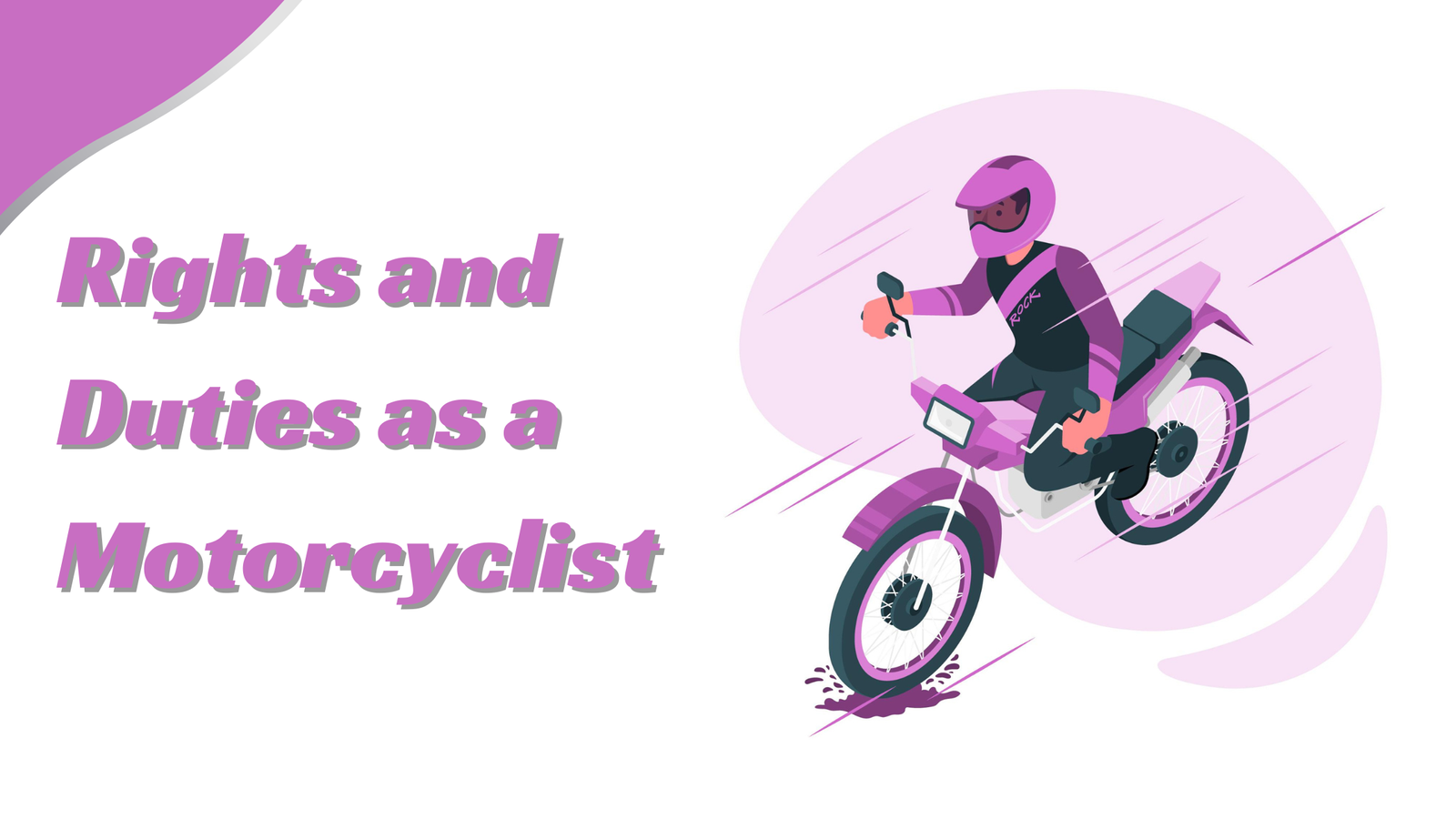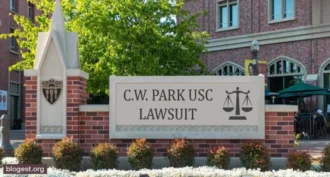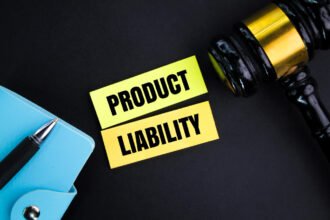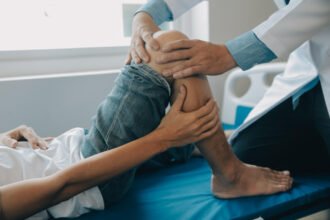Know Your Rights and Duties as a Motorcyclist: A Comprehensive Guide
Riding a motorcycle can be an exhilarating experience, offering a sense of freedom and adventure that few other modes of transportation can match. However, with this freedom comes responsibility. As a motorcyclist, safety and security should always be your top priority. When you ride with caution and awareness, you can significantly reduce the risk of road accidents. Conversely, neglecting safety measures can lead to severe, life-changing injuries or even death. Statistics from California reveal that approximately 50% of motorcycle accidents result in serious injuries, and in three out of four cases, another motorcyclist is at fault.
If you or someone close is a victim of a motorcycle crash, remember to claim damages from the other party that caused you such a fate. Understanding your rights and the steps you can take to claim damages from the responsible party. Of course, the compensation amount will be less if you are partially responsible for the mishap. But let the motorcycle accident lawyers review these facts and determine where your case stands. Even if you are partially at fault, a skilled motorcycle accident lawyer can help you negotiate a fair settlement to cover your medical treatment and rehabilitation costs. However, the best approach is to prevent accidents by adhering to safety practices and understanding your rights and responsibilities.
Helmet Safety: A Non-Negotiable Requirement
In California, specifically in San Diego, wearing a helmet is mandatory for all motorcyclists. The helmet you choose must be DOT-certified, ensuring it meets the Department of Transportation’s safety standards. DOT-certified helmets are designed to provide excellent impact protection and safeguard you from sharp objects during a crash. Key features of these helmets include adequate thickness, clear visibility, effective retention straps, and other essential physical characteristics.
The Importance of Wearing a Helmet
Wearing a helmet can be the difference between life and death in the event of an accident. According to the National Highway Traffic Safety Administration (NHTSA), helmets are estimated to be 37% effective in preventing fatal injuries to motorcycle riders and 41% effective for motorcycle passengers. In addition to protecting your head, a good helmet can also reduce the risk of traumatic brain injuries, which can have long-term, debilitating effects.
Licensing and Insurance: Legal Necessities
To legally ride a motorcycle in California, you must have a valid license. Obtaining a permit typically involves passing a written test and a skills test that demonstrates your ability to handle a motorcycle safely. Additionally, California law requires all motorcyclists to carry liability insurance. This insurance must provide coverage for bodily injury or death of another person and property damage.
Understanding Liability Insurance
Liability insurance is designed to cover damages or injuries you may cause to others in an accident. The minimum coverage requirements in California are:
- $15,000 for injury or death to one person
- $30,000 for injury or death to more than one person
- $5,000 for property damage
Proper insurance ensures you comply with the law and provides financial protection during an accident. It is advisable to consider higher coverage limits and additional coverage options, such as comprehensive and collision insurance, to protect yourself and your assets further.
Lane Splitting: Legal but Risky
Lane splitting, or riding a motorcycle between two lanes of traffic moving in the same direction, is legal in California, including San Diego. This practice can be beneficial in reducing traffic congestion and improving overall traffic flow. However, it comes with its risks and requires careful execution.
Guidelines for Safe Lane Splitting
The California Highway Patrol (CHP) provides guidelines to help motorcyclists safely engage in lane splitting:
- Speed Differential: The speed differential between your motorcycle and the surrounding traffic should not exceed ten mph.
- Traffic Speed: Lane splitting is safest when traffic moves at 30 mph or less.
- Avoid Large Vehicles: Refrain from lane splitting near large vehicles such as buses, RVs, and semi-trucks, as they have larger blind spots and may not see you.
- High-Risk Areas: Avoid lane splitting into areas with curves or near freeway or highway exits, where visibility and manoeuvrability are limited.
Legal Implications of Lane Splitting
Even if you follow all the recommended guidelines, accidents can still happen. If you are involved in a collision while lane splitting, the other party may be considered at fault if they were not adhering to safe driving practices. For example, if another motorcyclist hits you at 45 mph in stopped traffic, they could be deemed reckless and liable for the accident.
Comparative Fault: Understanding Shared Responsibility
California follows a comparative fault system, meaning multiple parties can share responsibility for an accident. Under this system, your compensation amount may be reduced based on your percentage of fault. However, you can still recover damages from other at-fault or negligent parties.
Safety Practices: Your Best Defense
While understanding your rights and legal protections is essential, adopting safe driving practices is the most effective way to protect yourself from accidents. Here are some key safety tips for motorcyclists:
Defensive Riding
- Stay Visible: Wear bright clothing and use reflective materials to make yourself more visible to other drivers, especially at night.
- Maintain a Safe Distance: Keep a safe following distance from other vehicles to allow adequate time to react to sudden stops or changes in traffic conditions.
Regular Maintenance
- Check Your Bike: Regularly inspect your motorcycle for mechanical issues, including brakes, tyres, lights, and fluids. Proper maintenance ensures your bike is in optimal condition and reduces the likelihood of malfunctions on the road.
- Tire Pressure: Check your tire pressure regularly to ensure proper traction and handling. Underinflated or overinflated tyres can compromise your safety.
Rider Education
- Take a Safety Course: Enroll in a motorcycle safety course to enhance your riding skills and learn advanced techniques for handling various road conditions.
- Stay Informed: Keep up-to-date with your area’s latest traffic laws and regulations. Understanding the road rules can help you make informed decisions while riding.
What to Do After an Accident
Despite taking all precautions, accidents can still occur. Knowing what to do immediately after an accident can significantly impact your ability to recover damages and protect your rights.
Steps to Take After a Motorcycle Accident
- Seek Medical Attention: Your health and safety are the top priority. Seek medical attention immediately, even if you do not feel injured. Some injuries may not be apparent right away.
- Document the Scene: If you can, take photos of the accident scene, your motorcycle, other vehicles involved, and any visible injuries. This documentation can be crucial for your insurance claim and legal case.
- Exchange Information: Obtain contact and insurance information from the other parties involved in the accident. Also, gather contact information from any witnesses.
- Contact Law Enforcement: Report the accident to the police and obtain a copy of the accident report. This report can provide important details and serve as evidence in your case.
- Consult an Attorney: Contact a motorcycle accident lawyer to discuss your case and explore your options for seeking compensation. An experienced attorney can guide you through the legal process and help you achieve a favourable outcome.
Conclusion
Riding a motorcycle comes with unique risks and responsibilities. By understanding your rights, adhering to safety practices, and being prepared for the unexpected, you can enjoy the freedom of the open road while minimizing the risk of accidents and injuries. If you are involved in an accident, seeking legal assistance and prioritizing your health can help you navigate the challenges ahead and secure the compensation you deserve. Safe riding!



















